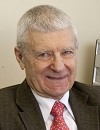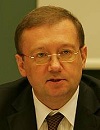 |
||
|
Plutonium Shortage Threatens NASA Deep Space Program – Reports RIA Novosti, PUBLISHED September 28, 2013` NASA’s deep space exploration program could face the ax as global supplies of the plutonium-238 nuclear fuel used to power spacecraft like Voyager and the Mars Curiosity rover dry up, media reports and NASA memos show, with some of them blaming Russia for the problem. A story in the tech and science publication Wired said last week that the United States’ scientific stockpile of plutonium-238, which is largely a by-product of nuclear weapons’ production, is down to 36 pounds (16.3 kilograms). In an attachment to a letter calling for US production of plutonium-238 to be restarted, NASA Administrator Charles Bolden said in 2010 that the amount of plutonium-238 “available from Russia will not meet the need for robotic planetary exploration into the next decade” and that, in any case, “Russia has stopped shipment” of the radioactive isotope. Alan Newhouse, a retired nuclear space consultant who played a key role in the first purchase of Russian plutonium-238 back in the 1990s, told Wired that he had heard that Russia has no more plutonium-238 left to sell. But it’s not just Russia’s fault. US scientists’ pleas for what they say is a relatively modest $10 to 20 million in funding each year through 2020 to restart US plutonium-238 production have fallen on deaf ears in Congress, Wired said. With that amount of funding, the United States would be able to make between 3.3 and 11 pounds (1.5-5.5 kilograms) of plutonium-238 annually — “plenty to keep a steady stream of spacecraft in business,” Wired wrote. The United States has restarted production but on a small scale. NASA's planetary science division head Jim Green said in March that NASA expects to have “a plan from the Department of Energy on how they'll be able to satisfy our requirement of 1.5 to 2 kilograms (3.3 – 4.4 pounds) a year," wrote web-based science, research and technology news service PhysOrg. But the shortage persists, and Planetary Society blogger Casey Dreier lamented last week that “it would truly devastate the future of planetary exploration if we run out” of plutonium-238. In fact, space exploration is already suffering because of the shortage, with “any of the eight deep-space robotic missions that NASA had envisioned over the next 15 years already delayed or canceled,” according to Wired. Topics: USA Other news: Russia Gives Iran Control of Bushehr Nuclear Plant Construction of the power plant began in the 1970s but was plagued by delays. Rosatom to Be Key Contractor in Finnish NPP Project – Putin Aide Finland currently operates four nuclear reactors in two power plants, all located on the shores of the Baltic Sea. US, Russia Sign Nuclear Energy Agreement Sergey Kirienko, the director general of Rosatom, Russia’s state atomic energy corporation, also signed the deal in Vienna. |
Hero of the day 
Jacques Repussard: knowledge, independence, proximity They told me: "Mr Repussard, we're not used to responding to anti-nuclear organisations". To which I replied: "We will not reveal any state or trade secrets, but we will not leave them without any answer". INTERVIEW
Georgy Toshinsky OPINION
Alexander Yakovenko |

